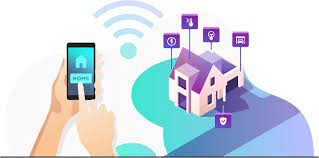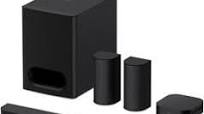Smart Home Integration: Transforming Your Living Space
In this digital age, technology has become an integral part of our lives. From smartphones to smart TVs, we are constantly surrounded by devices that make our lives easier and more convenient. One area where technology has truly revolutionized the way we live is in our homes, through the concept of smart home integration.
Smart home integration refers to the seamless connection and control of various devices and systems within your home. It allows you to automate and control everything from lighting and heating to security systems and entertainment devices, all from a single interface or even using voice commands.
One of the key benefits of smart home integration is convenience. Imagine being able to turn off all the lights in your house with a simple voice command or adjust the temperature without leaving your cozy spot on the couch. With smart home integration, these tasks become effortless, saving you time and effort.
But convenience is just the tip of the iceberg. Smart home integration also offers enhanced energy efficiency. You can program your devices to automatically adjust settings based on occupancy or time of day, ensuring that energy is not wasted when it’s not needed. This not only reduces your carbon footprint but also helps you save on utility bills.
Another significant advantage of smart home integration is improved security. With connected security systems, you can monitor your home remotely through cameras and receive real-time alerts if any unusual activity is detected. You can even integrate smart locks that allow you to grant access to visitors remotely or receive notifications when someone enters or leaves your property.
Entertainment enthusiasts will also appreciate the benefits of smart home integration. With a connected entertainment system, you can create customized scenes for different moods or activities – dimming lights, lowering blinds, and starting your favorite movie with a single command. You can even stream music wirelessly throughout your entire house for a truly immersive audio experience.
When it comes to choosing a smart home integration system, there are various options available. From popular voice assistants like Amazon Alexa and Google Assistant to dedicated smart home hubs, the market offers a wide range of solutions to suit different needs and budgets. It’s essential to research and select a system that aligns with your requirements and integrates seamlessly with the devices you already own.
While the concept of smart home integration may seem overwhelming at first, it’s worth noting that many systems are designed with user-friendliness in mind. Manufacturers understand that not everyone is a tech expert, so they strive to create intuitive interfaces and provide comprehensive support to ensure a smooth user experience.
In conclusion, smart home integration has transformed the way we interact with our living spaces. It offers convenience, energy efficiency, enhanced security, and endless possibilities for entertainment. By embracing this technology, you can create a truly connected home that adapts to your needs and enhances your everyday life. So why not take the leap into the future of smart living?
Frequently Asked Questions on Smart Home Integration: Exploring the Concept, Connectivity, and ICT
- What is the concept of a smart home?
- What is a smart home integration?
- How are smart home devices connected?
- What is smart home ICT?
What is the concept of a smart home?
The concept of a smart home revolves around the integration of various devices, systems, and technologies within a residential space to create an interconnected and automated environment. A smart home utilizes internet connectivity and sensors to enable the control and management of different aspects of the home, enhancing convenience, energy efficiency, security, and overall comfort for its occupants.
At its core, a smart home is designed to make everyday tasks easier and more efficient. It allows homeowners to remotely control and automate various functions such as lighting, heating/cooling systems, appliances, security systems, entertainment devices, and more. This can be achieved through dedicated apps on smartphones or tablets or by using voice assistants like Amazon Alexa or Google Assistant.
By integrating these devices and systems into a central hub or network, users can create personalized settings and schedules that align with their lifestyle preferences. For example, you can program your lights to turn on gradually in the morning to simulate a sunrise or set your thermostat to adjust automatically when you leave the house.
Energy efficiency is another significant aspect of smart homes. With real-time monitoring and control capabilities, homeowners can optimize their energy consumption by adjusting settings based on occupancy or time of day. This helps reduce waste and lowers utility bills while contributing positively to environmental sustainability.
Smart homes also prioritize security by integrating advanced security systems. Homeowners can monitor their property remotely through video surveillance cameras or receive instant alerts if any unusual activity is detected. Additionally, smart locks provide convenient access management options such as remote unlocking for visitors or temporary access codes for service providers.
The entertainment experience is elevated in a smart home as well. With integrated audiovisual systems, users can stream music wirelessly throughout their homes or create immersive experiences by synchronizing lighting effects with movies or music playlists.
Overall, the concept of a smart home revolves around leveraging technology to enhance comfort, convenience, energy efficiency, security, and entertainment within residential spaces. It offers homeowners greater control over their living environments while streamlining daily tasks and providing a more connected and enjoyable living experience.
What is a smart home integration?
Smart home integration refers to the process of connecting and controlling various devices and systems within a home through a central hub or interface. It involves linking devices such as lights, thermostats, security systems, entertainment systems, and more, to create an interconnected network that can be controlled remotely or automated based on preset conditions.
With smart home integration, users can control and monitor their home’s functions using a single interface, such as a smartphone app or voice commands. This allows for greater convenience, energy efficiency, security, and customization in managing different aspects of the home.
By integrating devices and systems together, users can create personalized scenes or routines that automate multiple actions simultaneously. For example, with a single command or tap on a smartphone app, you could dim the lights, adjust the thermostat to your preferred temperature, lock the doors, and start playing your favorite music.
Smart home integration often utilizes wireless communication protocols like Wi-Fi or Bluetooth to connect devices together. Additionally, many smart homes also leverage voice assistants like Amazon Alexa or Google Assistant to provide hands-free control over connected devices.
The benefits of smart home integration are numerous. It offers convenience by allowing users to control various aspects of their homes remotely or through automation. It enhances energy efficiency by optimizing device usage based on occupancy or time of day. It improves security by providing remote monitoring and alerts for potential threats. And it enhances entertainment experiences by enabling seamless control over audiovisual systems throughout the house.
Overall, smart home integration brings together different technologies to create a cohesive ecosystem that simplifies daily tasks and enhances the overall living experience within a modern home.
How are smart home devices connected?
Smart home devices are connected through various means, depending on the technology and protocols they utilize. Here are some common methods of connectivity:
- Wi-Fi: Many smart home devices connect to your home network via Wi-Fi. This allows them to communicate with each other and with your smartphone or other control devices through your existing internet connection. Wi-Fi connectivity provides a wide range and is commonly used for devices like smart speakers, thermostats, cameras, and lighting systems.
- Bluetooth: Bluetooth is another popular method of connecting smart home devices. It enables direct communication between devices in close proximity without the need for an internet connection. Bluetooth is commonly used for smaller devices like smart locks, sensors, and wearable gadgets.
- Zigbee: Zigbee is a low-power wireless communication protocol designed specifically for smart home applications. It creates a mesh network where multiple devices can connect to each other and pass along information to extend the range of coverage. Zigbee is often used for smart lighting systems, door/window sensors, and temperature controls.
- Z-Wave: Z-Wave is another wireless communication protocol that operates on a different frequency than Wi-Fi or Bluetooth. Like Zigbee, it creates a mesh network allowing multiple devices to communicate with each other and extend the coverage range. Z-Wave is commonly used for various smart home devices such as door locks, thermostats, and security systems.
- Ethernet: Some more advanced smart home systems may require a wired Ethernet connection for reliable and stable connectivity. This is often seen in larger installations or professional setups where wired connections are preferred over wireless options.
- Cellular Networks: Certain smart home devices that require remote monitoring or control may rely on cellular networks (3G/4G) instead of traditional Wi-Fi or Ethernet connections. This allows them to operate independently of local network infrastructure.
It’s important to note that many smart home systems utilize a combination of these connectivity methods to create a comprehensive and interconnected network. Additionally, most smart home devices are designed to be compatible with popular smart home platforms or hubs, allowing for centralized control and management of multiple devices from a single interface.
What is smart home ICT?
Smart Home ICT stands for Smart Home Information and Communication Technology. It refers to the integration of technology and communication systems within a smart home environment. Smart Home ICT encompasses the various devices, networks, protocols, and software that enable seamless connectivity and communication between different smart devices and systems within a home.
Smart Home ICT enables homeowners to control and automate various aspects of their homes, such as lighting, heating, security systems, entertainment devices, and more. It involves the use of sensors, actuators, networking technologies (like Wi-Fi or Bluetooth), cloud-based platforms, and mobile applications to create an interconnected ecosystem.
The primary goal of Smart Home ICT is to enhance convenience, efficiency, comfort, and security for homeowners. By integrating different devices and systems into a unified network, users can monitor and control their homes remotely through smartphones or other connected devices. For example, you can adjust the temperature settings or turn on/off lights while away from home using a mobile app.
Additionally, Smart Home ICT allows for automation based on predefined rules or user preferences. This means that tasks like scheduling routines (such as turning off lights at bedtime) or triggering actions based on specific events (such as receiving a notification when someone enters your property) can be easily set up.
Furthermore, Smart Home ICT plays a crucial role in energy management by optimizing resource usage within a home. With real-time data collection from sensors and intelligent algorithms analyzing energy patterns, homeowners can make informed decisions about energy consumption and reduce waste. This not only helps save money but also contributes to environmental sustainability.
Security is another significant aspect of Smart Home ICT. By integrating security systems like cameras, motion detectors, smart locks, and alarm systems into the networked ecosystem of a smart home, users can have enhanced control over their home’s security. They can monitor activities remotely through video feeds or receive alerts in case of any suspicious activity.
In summary, Smart Home ICT refers to the technology infrastructure that enables seamless connectivity and communication between various devices and systems within a smart home. It empowers homeowners with greater control, automation, energy efficiency, and security, ultimately enhancing their overall living experience.




